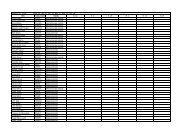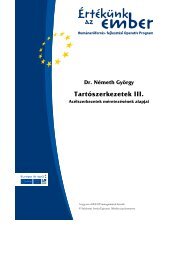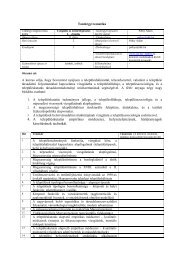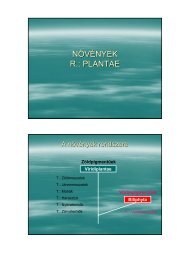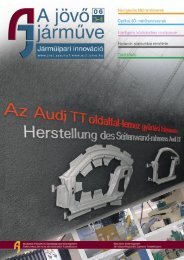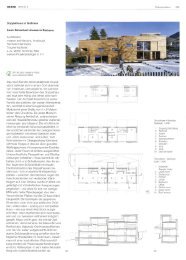Environmental Kuznets curves—real progress or passing the buck ...
Environmental Kuznets curves—real progress or passing the buck ...
Environmental Kuznets curves—real progress or passing the buck ...
Create successful ePaper yourself
Turn your PDF publications into a flip-book with our unique Google optimized e-Paper software.
190<br />
D.S. Rothman / Ecological Economics 25 (1998) 177–194<br />
Fig. 7. Ecological footprints vs. real GDP per capita (Wackernagel et al., 1997).<br />
if everybody were to live at current N<strong>or</strong>th American<br />
standards, would require three times <strong>the</strong> existing<br />
global stock of ecologically productive<br />
cropland, pasture and f<strong>or</strong>est land. Kranendonk<br />
and Bringezu (1993) calculate that annual consumption<br />
of <strong>or</strong>ange juice in western Germany<br />
requires m<strong>or</strong>e than three times <strong>the</strong> total domestic<br />
fruit growing area of <strong>the</strong> region. McLaren (1996)<br />
estimates that <strong>the</strong> UK will need to reduce consumption<br />
of timber, cement, pig-iron, aluminum<br />
and chl<strong>or</strong>ine by 64, 69, 83, 84 and 100%, respectively,<br />
to reach sustainable levels.<br />
As an example of how one can use <strong>the</strong>se new<br />
measures to test <strong>the</strong> EKC hypo<strong>the</strong>sis, Fig. 7<br />
shows data f<strong>or</strong> <strong>the</strong> ecological footprints of 52<br />
nations estimated by Wackernagel et al. (1997)<br />
plotted against GDP per capita. This measure<br />
estimates <strong>the</strong> land and water area required to<br />
sustainably provide f<strong>or</strong> <strong>the</strong> average per capita<br />
consumption in each nation. It includes food consumption,<br />
wood consumption, direct and embodied<br />
energy and built area. Table 2 shows <strong>the</strong><br />
results f<strong>or</strong> four alternative specifications relating<br />
<strong>the</strong> ecological footprints per capita to GDP per<br />
capita. Linear and log-log specifications fit <strong>the</strong><br />
data equally well. Adding a quadratic term, following<br />
<strong>the</strong> EKC hypo<strong>the</strong>sis, does not represent an<br />
improvement in ei<strong>the</strong>r case. Even if it were accepted,<br />
<strong>the</strong> estimated turning point of almost<br />
$22000 f<strong>or</strong> <strong>the</strong> quadratic specification is outside<br />
<strong>the</strong> range of <strong>the</strong> empirical data and <strong>the</strong> logquadratic<br />
specification results in no turning point<br />
at all.<br />
6. Conclusions<br />
Have we been growing out of our environmental<br />
problems? Since it has been argued that we<br />
have yet to appropriately address this question,<br />
<strong>the</strong> answer would have to be that we really cannot<br />
say. On examination of <strong>the</strong> evidence, however, <strong>the</strong><br />
answer is no. Can we do so? Hopefully. In fact, it<br />
can be argued that we need to w<strong>or</strong>k on finding<br />
ways to help richer nations reduce <strong>the</strong>ir impact<br />
and po<strong>or</strong>er nations ‘tunnel’ through <strong>or</strong> ‘leapfrog’





